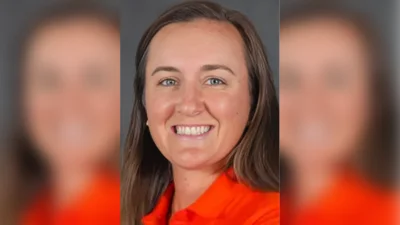"Senior Energy Planner" Jon-Paul D’Aversa (L) and "Sustainability Officer" Brandi Whetstone (R) want to ban coal and natural gas in Ohio. | Facebook/MORPC
"Senior Energy Planner" Jon-Paul D’Aversa (L) and "Sustainability Officer" Brandi Whetstone (R) want to ban coal and natural gas in Ohio. | Facebook/MORPC
A Columbus-based non-profit founded to coordinate regional road building and stormwater management is now spending tens of millions in federal tax dollars lobbying for the building of government-subsidized solar panel farms across central Ohio.
Leaders of the Mid-Ohio Regional Planning Commission (MORPC) are urging county and city leaders to authorize the replacement of thousands of acres of soybean, corn and wheat fields with tens of thousands of rows of solar panels, arguing their construction is the best way to "decarbonize" the state.
"We want to signal that our region is ‘open for solar business,’ and we’re ready to help more communities as they consider solar, along with the sustainability and economic development benefits it brings," said Kerstin Carr, MORPC "Director of Planning & Sustainability."
So far, the effort has brought millions in federal grants to MORPC, and promises hundreds of millions more in federal subsidies to companies who promote and install solar panels in Ohio.
A Buckeye Reporter analysis of reports submitted by MORPC to the State of Ohio Auditor found the group is budgeting $23.2 million in spending in 2023. That's up from $14.8 million last year.
Federal taxpayer grants to MORPC have more than doubled over the past five years, from $6.5 million to $13.8 million.
All told, MORPC has spent $78.4 million since 2019, $40.1 million of which came from U.S. taxpayers.
According to its published budget, in 2023 MORPC will spend $9.92 million on employees and another $6.5 million on consultants.
The report says MORPC had 84 employees in 2022.
A ban on starting your car in winter?
Those employees include “Senior Energy Planner" Jon-Paul D’Aversa, an "energy equity" activist and advocate for taxpayer subsidies to help the working poor afford solar panels.
Along with MORPC's "sustainabilty officer," Brandi Whetstone, D'Aversa developed a "tool kit" for Central Ohio cities looking to embrace solar panels.
Whetstone is a Bowling Green State graduate who previously worked as a Sierra Club executive and on Democrat political campaigns in Columbus.
The Sierra Club is dedicated to banning the production of energy with fossil fuels, like coal and natural gas.
Solar panel development "aligns perfectly with MORPC’s Local Government Energy Partnership, Sustainable2050 and the Regional Sustainability Agenda," Whetstone said.
"Sustainable 2050" is MORPC's initiative to get Central Ohio municipal leaders to agree to take steps to end fossil fuel use in their communities by 2050. Measures include banning natural gas hook-ups in homes and a ban on Ohio drivers heating up their cars in winter. Whetstone is currently offering "educational materials" to cities that encourage a car-starting ban.
MORPC has secured promises from mayors in 22 communities-- includng Columbus, Reynoldsburg, Upper Arlington, Westerville, Grove City and Dublin-- pledging they will work towards the ban. It is lobbying others, including Mount Vernon in Knox County.
MORPC was organized in 1943 as the Franklin County Planning Commission, charged with helping leaders of municipalities in the county coordinate the building of highways, water and sewer systems. As metro Columbus expanded, it expanded into outlying counties, including Fairfield, Knox, Hocking, Licking, Delaware, Morrow and Perry. Its name was changed in 1969.
Ohio state law authorizes the creation of regional planning commissions, and allows them to take federal and state grants as well as to levy dues on participating municipalities.
A U.S. Department of Energy report released in August found that the federal government spent $83.3 billion in taxpayer subsidies for solar and wind energy development, between 2016 and 2022.
The report found that in 2022, the solar industry generated 0.6 quadrillion British thermal units of energy, less than one percent of total energy, versus. 44.9 quadrillion from the natural gas industry, or 45 percent of total energy.
The solar industry recevied $7.5 billion in subsidies last year, versus $2.3 billion for the natural gas industry.
-------
Mid-Ohio Regional Planning Commission Budget, 2019-2023
| Federal Revenue |
MORPC "Sustainable 250" Communities
Which communities have signed on to MORPC's program to ban fossil fuels by 2050?
Source: MORPC






 Alerts Sign-up
Alerts Sign-up